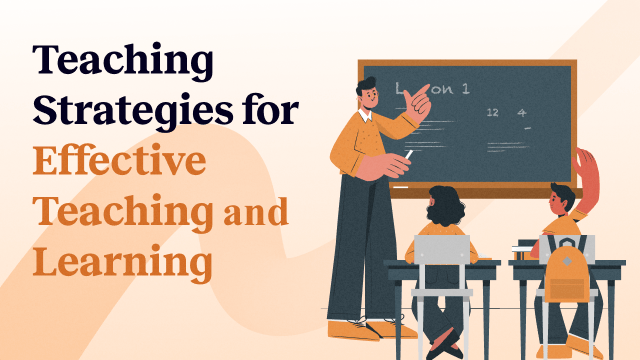Effective teaching and learning are essential for students to acquire knowledge, skills, and competencies that they can use throughout their lives.
While there is no single approach to teaching and learning that works for everyone, there are some strategies that educators can use to create an effective learning environment. In this essay, I will discuss some strategies for effective teaching and learning.

Identify Learning Objectives:
The first step in creating an effective learning environment is to identify the learning objectives.
Learning objectives are the desired outcomes of a lesson or course, and they should be specific, measurable, achievable, relevant, and time-bound.
When students understand the learning objectives, they can focus their efforts on achieving those objectives.
Use Active Learning Techniques:
Active learning techniques engage students in the learning process by requiring them to participate actively in the lesson. Some examples of active learning techniques include group discussions, debates, problem-based learning, and simulations.
Active learning techniques encourage students to think critically, apply their knowledge, and work collaboratively.
Use Technology Effectively:
Technology can be a powerful tool for teaching and learning, but it must be used effectively. Teachers should choose technology that is appropriate for the learning objectives and the student’s needs.
Technology can be used to provide students with access to information, engage them in interactive activities, and provide feedback on their progress.
Provide Feedback:
Feedback is critical for effective teaching and learning. Feedback should be timely, specific, and actionable.
It should help students understand what they are doing well and what they need to improve. Teachers can provide feedback in many ways, including written comments, verbal feedback, and self-assessment.
Create a Positive Learning Environment:
A positive learning environment is essential for effective teaching and learning. Teachers should create an environment that is safe, supportive, and respectful. Students should feel comfortable asking questions, participating in discussions, and sharing their ideas.
Teachers should encourage students to learn from their mistakes and also celebrate their successes.
Use Multiple Modes of Instruction:
Different students learn in different ways, so teachers should use multiple modes of instruction. Some students learn best through visual aids, such as diagrams and pictures. Other students learn best through auditory instruction, such as lectures and podcasts.
Still, others learn best through kinesthetic instruction, such as hands-on activities.
Encourage Critical Thinking:
Critical thinking is an essential skill for effective teaching and learning. Teachers should encourage students to think critically by asking open-ended questions, encouraging them to evaluate evidence, also challenging their assumptions.
Critical thinking helps students develop their problem-solving skills, make informed decisions, also communicate their ideas effectively.
Use Formative Assessment:
Formative assessment is an ongoing process of gathering feedback on student learning. Teachers can use formative assessment to evaluate student progress, identify areas of weakness, and adjust their teaching strategies accordingly.
Formative assessment can take many forms, such as quizzes, tests, and classroom discussions.
Encourage Collaborative Learning:
Collaborative learning is an effective strategy for teaching and learning. Learning allows students to work together to solve problems, share ideas, and learn from each other. Collaborative learning can take many forms, such as group projects, peer-to-peer teaching, and group discussions.
Provide Opportunities for Reflection:
Reflection is an essential component of effective teaching and learning. Teachers should provide opportunities for students to reflect on their learning, such as through writing assignments or class discussions.
Reflection helps students evaluate their progress, identify areas of strength and weakness, also set goals for the future. 온라인카지노사이트
Be First to Comment